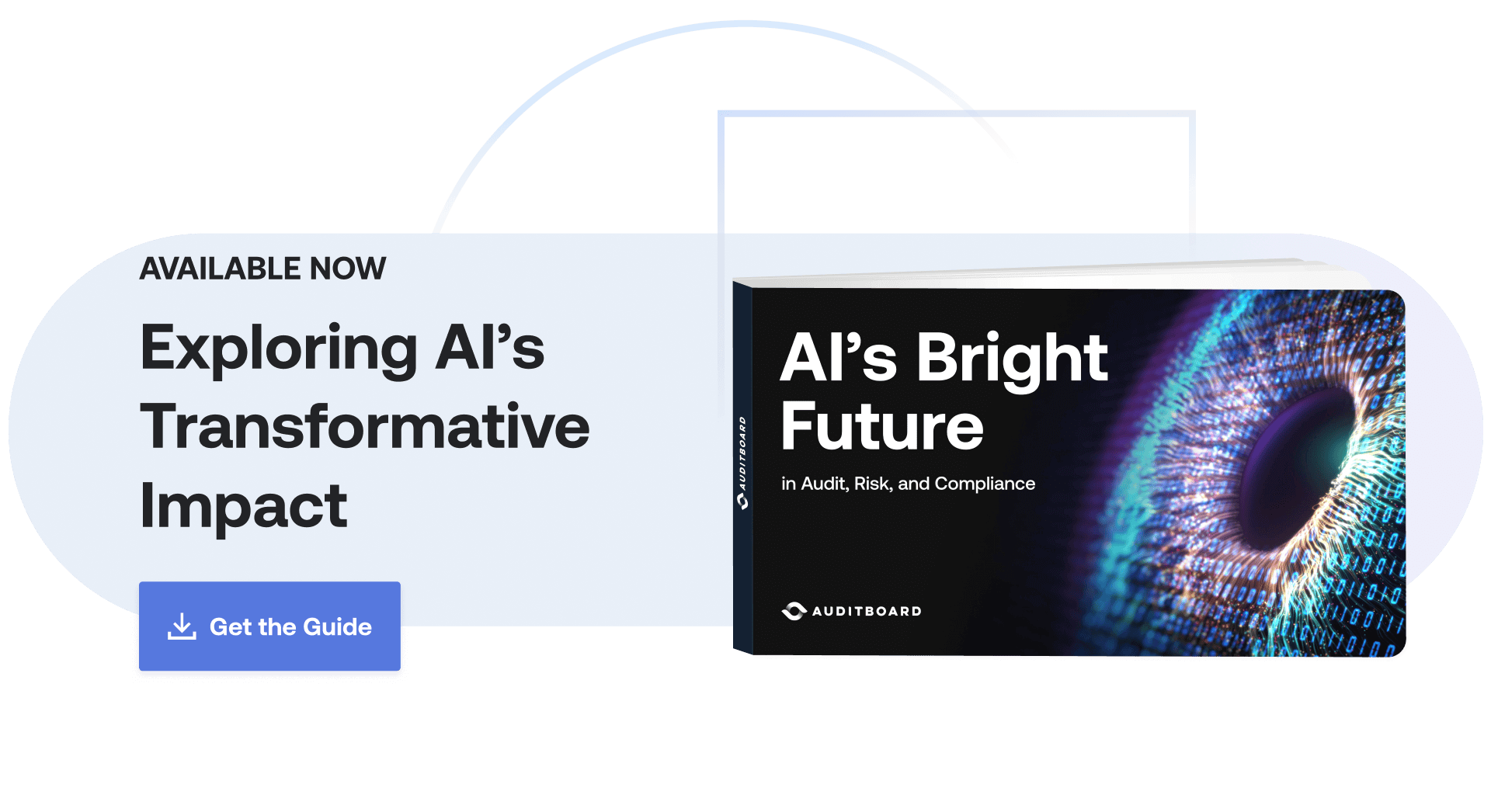
March 11, 2024 • 5 min read
How AI Is Transforming Audit, Risk, and Compliance
Over the past decade, audit, risk, and compliance functions have undertaken digital transformation to align and optimize efforts to help their organizations become more resilient and sustainable. At the same time, these transformations must serve the second purpose of helping to reduce the administrative burden and manual tasks historically plaguing audit, risk, and compliance teams with already limited resources. Artificial intelligence (AI) will play a critical role in helping teams support both objectives simultaneously — building more resilient organizations while getting more done with less effort.
To understand the full scope of the AI opportunity for audit, risk, and compliance teams, however, it’s also important to understand evolving organizational expectations around the roles these teams play. While many organizations still focus primarily on achieving compliance and mitigating risks, more organizations than ever are relying on their audit, risk, and compliance functions to help them uncover proactive business insights and opportunities. Delivering these outcomes requires more than simply normalizing and integrating data, processes, and workflows. It demands connecting data across functions, uncovering trends as they happen, and proactively surfacing actionable issues, risks, and insights. AI-powered risk management technologies like AuditBoard will be essential in supporting these efforts.
For audit, risk, and compliance teams exploring how they can leverage AI to surface insights and opportunities, enhance risk management, and create efficiencies, it’s helpful to start by establishing a foundational understanding.
Read on to better understand:
- How recent advances in generative AI are creating new opportunities for audit, risk, and compliance teams.
- The scope and nature of these opportunities, including sample use cases.
- How data-driven AI insights and recommendations can help organizations drive efficiency, improve cross-functional coordination and visibility, and proactively surface data-driven insights.
- The basics of how generative AI outputs are created and optimized.
- Risk management essentials for reducing generative AI risk.
There is no doubt that AI will transform how audit, risk, and compliance work gets done. Make sure your organization is on track to make the most of its incredible potential.
The Early Role of AI in Audit, Risk, and Compliance
While machine learning techniques are not new, recent advances in generative AI and large language models represent significant opportunities for audit, risk, and compliance teams. Even in its early forms, AI is a valuable tool for helping users expedite how quickly they can bring together the data and insights needed to begin work on small tasks and large projects alike. Whether the work involves drafting new controls or initiating disaster recovery audits, AI technologies can help kickstart the work by providing drafts, frameworks, project steps, and more. As AuditBoard’s Senior Internal Audit Advisor Richard Chambers and Senior Director of Risk Solutions Anand Bhakta have asserted, “We see AI as a capacity multiplier and magnifier for human intelligence,” and generative AI could “prove to be the ultimate capacity multiplier.”
Importantly, users at every level can already derive significant value from leveraging AI. For audit, risk, and compliance professionals with deep expertise in their disciplines, AI can assist with repetitive or lower-value tasks, expanding their bandwidth and freeing them up to focus on more strategic tasks. For professionals early in their careers, AI can help to flatten the learning curve, level up their expertise in various domains, and ground their work in industry best practices and their organizations’ standard operating procedures.
Download AI’s Bright Future in Audit, Risk and Compliance: Exploring AI’s Transformative Impact, Use Cases, and Risks to connect data across functions, uncover trends as they happen, and proactively surface actionable issues, risks, and insights.
You may also like to read


Connected risk: The AI-driven convergence of audit, risk, and compliance

AI governance and the future of GRC

Beyond the compliance checklist: Risk-driven cyber GRC

Connected risk: The AI-driven convergence of audit, risk, and compliance

AI governance and the future of GRC
Discover why industry leaders choose AuditBoard
SCHEDULE A DEMO




